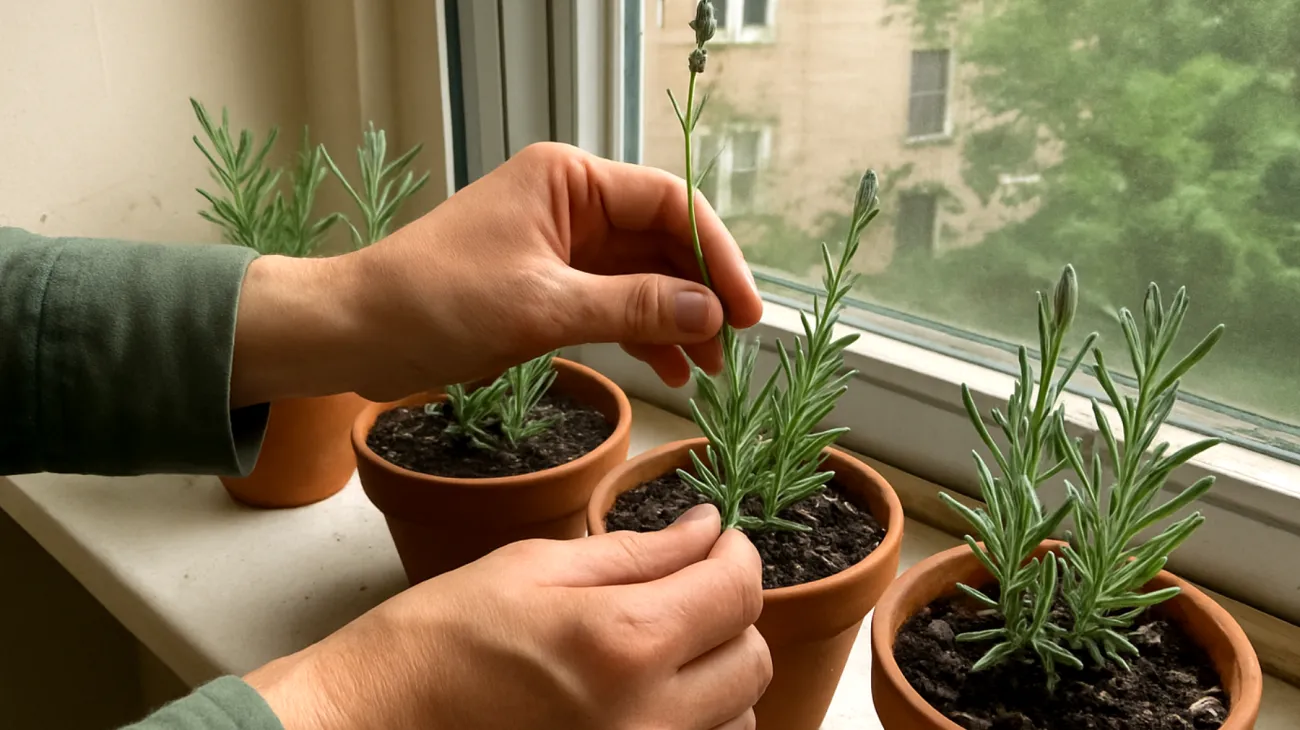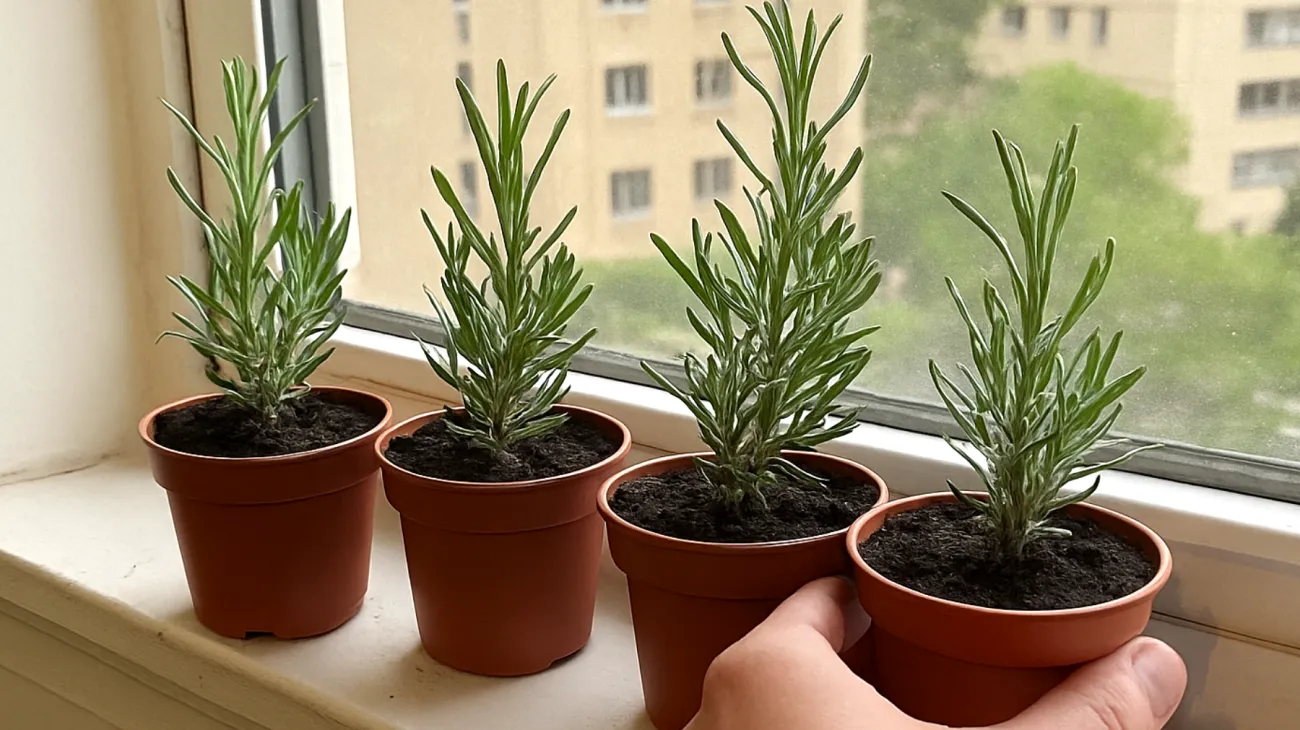Growing Lavender Indoors: Overcoming Space Constraints and Light Challenges
Lavender isn’t just another pretty herb on the windowsill. With its antimicrobial properties, calming scent, and ability to repel pests, this Mediterranean native earns every inch of its space. But growing lavender indoors—especially in small urban apartments or houses with limited windows—can feel like trying to raise a desert plant in a shoebox. And for many people, that’s not far from reality.
The challenges run deeper than most gardeners realize. Lack of natural sunlight, stagnant air, and cramped conditions often cause lavender to wither, droop, or stop blooming altogether. These aren’t merely aesthetic problems—they represent fundamental disruptions to the plant’s evolved biology and metabolic processes that have developed over millennia in harsh Mediterranean climates.
Lavender naturally thrives in Mediterranean conditions with warm summers and cool winters, developing sophisticated adaptations for intense sunlight and well-draining soils. When these environmental factors are absent or compromised, the plant struggles to perform its most basic functions: photosynthesis, oil production, and structural development.
Yet urban living rarely accommodates such specific requirements. Most apartment dwellers face north-facing windows, limited floor space, and air circulation that barely moves. The result? Disappointed gardeners who assume lavender is “too difficult” for indoor cultivation, when in reality, the plant simply needs its environmental needs understood and strategically met.
Still, with a few strategic decisions—rooted in plant biology and spatial optimization—lavender can not only survive but actively thrive indoors. The key lies in understanding that successful indoor lavender cultivation isn’t about recreating an outdoor garden in miniature, but about creating a specialized microenvironment that addresses the plant’s most critical biological requirements.
How Light Affects Lavender’s Metabolism and What to Do When You Can’t Provide a Sun-Soaked Window
Every vital function of lavender—photosynthesis, oil production, even its structural strength—is calibrated for high light exposure. Lavender requires full sun, defined as six or more hours per day of direct sunlight. Indoors, however, it’s not just about visible sunlight but overall light intensity and consistency throughout the day.
The complexity of indoor light management becomes apparent when you consider that a few hours of diffuse afternoon light through a north-facing window won’t supply the photosynthetically active radiation needed for the plant to thrive. Light isn’t just illumination for lavender—it’s the primary energy source that drives cellular metabolism, essential oil synthesis, and flower production.
Yet urban dwellers rarely have the privilege of a greenhouse or solarium. The harsh reality of apartment living means most people must work with whatever windows they have, often facing the wrong direction or partially blocked by neighboring buildings. This creates a fundamental mismatch between the plant’s evolved requirements and the available growing environment.
To match lavender’s light needs in confined indoor spaces, strategic positioning becomes critical. Choose the sunniest location available, ideally a south-facing window where full sunlight stays for at least six hours. This positioning takes advantage of the sun’s strongest rays during midday hours when photosynthetic activity peaks.
If natural sunlight is insufficient, supplemental lighting becomes necessary rather than optional. Full-spectrum grow lights, specifically those rated for photosynthetic plants, can provide the consistent energy input that lavender requires. Position the light 6 to 12 inches above the plant, and leave it on for 12–14 hours a day to simulate Mediterranean summer conditions that the plant expects.
Environmental modifications can amplify available natural light significantly. Paint nearby walls white or other reflective colors to bounce photons in multiple directions, increasing overall usable light. Reflective surfaces act as light multipliers, redirecting rays that would otherwise be absorbed by darker surfaces back toward the plant. Even small changes like placing aluminum foil or mirrors strategically around the growing area can measurably improve light availability.
Avoid placing lavender too close to sheer curtains or behind objects that block light—for lavender, direct exposure equals survival. Understanding the plant’s light-driven metabolism shifts perception: you’re not merely “giving it light”—you’re feeding it energy to build structure, produce scent compounds, and grow blooms.
Choosing the Right Lavender Cultivar and Container to Prevent Space-Induced Stress
Most failures in growing indoor lavender begin at the garden center, when shoppers fall for the lush, big varieties like ‘Provence’ or ‘Grosso’ because they look impressive. But these cultivars are bred for outdoor fields and open air—not for an 18-inch window ledge with limited airflow and soil volume.
The science of plant selection for container growing involves understanding how different varieties respond to restricted root space and controlled environments. Larger lavender cultivars develop extensive root systems and above-ground growth that quickly overwhelms container conditions, leading to stunted development and poor flowering.
Instead, compact cultivars adapt better to restricted space and container conditions. These varieties have been selected or naturally evolved to maintain their essential lavender characteristics while remaining manageable in size:
- ‘Hidcote Blue’ — cold-hardy, extremely compact, with deep purple flowers and strong scent, staying under 12–16 inches in height
- ‘Munstead’ — earlier blooming than most, settling into a tidy dome shape, and tolerating slightly cooler conditions
Container selection proves equally critical to plant success. Ignore decorative cache pots with no drainage hole—lavender hates wet feet, a preference confirmed by research showing the plant’s natural adaptation to well-draining Mediterranean soils. Lavender prefers well-drained, neutral to alkaline soil and develops problems in poorly drained conditions.
Use terracotta planters, which allow soil to breathe and reduce root rot risk, or vertical wall-mounted pots made for herbs. Terracotta’s porous nature enables excess moisture to evaporate through the container walls, mimicking the natural drainage that lavender experiences in its native rocky, hillside habitats.

An often-overlooked feature is depth. Lavender’s root system is deceptively deep—even compact types need adequate space for healthy root spread and development. The roots don’t just anchor the plant; they’re crucial for nutrient uptake and water regulation that keeps the above-ground portions healthy.
To fight space constraints without crowding your surfaces, vertical growing solutions become invaluable. Use tiered plant stands to allow vertical stacking without reducing light access to lower plants. Opt for perforated wall shelves near deep windows—air and light continue to circulate freely around each plant. If growing multiple lavender plants, ensure 4 to 6 inches of lateral spacing for airflow and light penetration.
The Role of Soil Texture, Air Movement, and Evaporation in Indoor Lavender Health
One of the trickiest indoor conditions to replicate is adequate airflow and evaporation. Outdoors, lavender benefits from wind currents keeping its leaves dry and exchanging gases efficiently. Indoors, stagnant air around the plant reduces transpiration and leads to chronic dampness—exactly what encourages root rot, powdery mildew, and aphids.
Lavender thrives in sandy loam, well-drained soil with a pH between 6.5 to 8. This pH range is considered ideal because it optimizes nutrient availability while preventing the acidic conditions that can stress Mediterranean plants. The key to balancing moisture in a compact container is drainage, aeration, and surface drying.
Pre-mixed potting soils—especially those labeled “moisture-retaining”—aren’t suitable for lavender’s needs. Instead, build a soil structure that mimics lavender’s native scrubby terrain. Mix 40% potting soil, 30% perlite or coarse sand, and 30% organic compost or small bark chips. This combination provides the crumbly, moderately fertile soil texture that research shows lavender prefers.
Add a bottom layer of expanded clay or fine gravel, about 1–2 inches thick, at the very base of the container before adding your soil. Leave 1 inch of space at the top of the pot so water doesn’t oversaturate the soil surface during watering.
Lavender has moderate water requirements and shows resistance to occasional drought conditions. Water only when the top 1–2 inches of soil feel completely dry—and when you do, saturate the soil so excess water can freely escape through the bottom holes.
As for airflow, fans aren’t just helpful—they’re often necessary. A small oscillating fan placed nearby keeps circulation steady, humidity balanced, and airborne pathogens in check. Avoid placing lavender directly in the path of air conditioners or heaters, though—those cause rapid drying or heat stress that can damage the plant’s delicate cellular structures.
How to Rein in Woody Stems and Weak Blooms Through Correct Pruning
Lavender indoors becomes leggy when it stretches for light. At the same time, poor indoor soil conditions cause the base to turn woody—a response to poor nutrient mobility and infrequent stimulation. The plant’s natural growth pattern involves developing woody stems over time, but indoor conditions can accelerate this process in ways that reduce flowering and overall vigor.
The best way to combat this is observational pruning and forceful encouragement of new growth. Every 6 to 8 weeks, assess the stems carefully. If lavender looks spindly, prune one-third of the stem, snipping just above the leaf node to encourage side branching. This technique redirects the plant’s energy from vertical growth into lateral development, creating a bushier, more productive plant.
Avoid cutting into dry, woody areas—lavender won’t regenerate from old wood, making precise cuts essential. After flowering, always deadhead the spent spikes. This prevents the plant from wasting energy on seed formation and instead channels resources into building hardy stems and preparing for the next bloom cycle.
Lavender also “communicates” through scent: if the smell weakens significantly, it often reflects underperforming essential oil production due to stress. Restore bloom potential by cleaning leaves of dust weekly with a dry, gentle brush, adjusting lighting if spikes stop forming, and ensuring root-bound plants are re-potted at least once a year into fresh soil.
A Few Things Most People Forget When Growing Lavender Indoors
While many guides focus on sunlight and watering, success depends just as much on small, easily skipped details. Water chemistry matters more than most people realize. Lavender is sensitive to chlorine-heavy tap water, which can cause root shock and interfere with nutrient uptake. Use filtered or dechlorinated water—letting tap water sit overnight uncovered allows chlorine to evaporate naturally.
Temperature stability proves crucial for consistent growth. Lavender suffers from sudden temperature switches. Avoid placing it where heating vents or window drafts cause erratic changes that stress the plant’s metabolic processes.
Fertilizing should be rare and carefully managed. High-nitrogen fertilizers weaken the scent and induce soft leaf growth that’s more susceptible to pests and diseases. Use low-nitrogen, slow-release, or no fertilizer at all unless growth has clearly stalled and the plant looks pale green.
Seasonal changes still apply indoors, even in climate-controlled environments. Reduce watering and rest the plant in late fall and winter—lavender needs a mild dormancy period to thrive again in spring. This dormancy allows the plant to conserve energy and prepare for vigorous growth when conditions improve.
Strategic placement, cultivar selection, and sensory care together form a complete plan to grow robust lavender despite space constraints. With the right lighting and airflow, supported by research-backed soil conditions and appropriate cultivar choices, compact varieties transform windowsills and corner plant stands into self-sustaining herbal zones that do more than just decorate—they purify air, soothe nerves, and bring consistency to an often-chaotic indoor environment.
The benefits compound over time: longer-lasting blooms, fewer fungal problems, and a plant that doesn’t just survive in limited space—it thrives. Success comes from understanding that lavender’s Mediterranean origins inform every aspect of its care, from soil pH to light requirements to water management. When we align our indoor growing practices with the plant’s evolved biology, we create conditions where lavender doesn’t just survive—it flourishes, bringing the authentic fragrance and natural beauty of the Mediterranean directly into our compact living spaces.
Table of Contents

